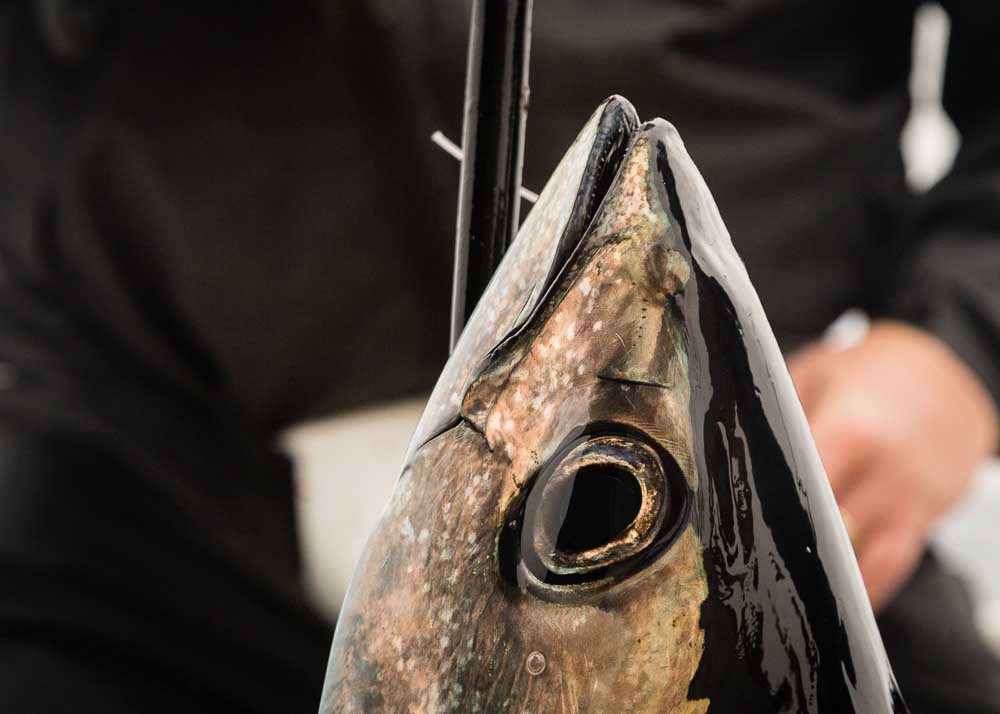Two tough years for tuna fishermen
Published 5:27 am Friday, November 16, 2018

- Albacore is the highly coveted for its mild flavor and firm texture.
ASTORIA — One skipper said it was his worst season in 15 years of fishing. Another classified it a “weird” year with scattered schools and undersized fish. For a second straight year, the news hasn’t been good for Oregon and Washington commercial tuna fisherman. According to official figures from the Pacific Fisheries Information Network (PFIN), commercial landings are down from the previous year, dropping significantly from the 10-year average in both states.
August has historically accounted for a majority of the tuna caught in a given season, but this year substantial schools arrived later than anticipated, after a majority of commercial fishermen left or turned their attention to other fisheries.
“It was a crusher month for September,” said F/V Oppor-Tuna-Ty skipper Aaron Walker, whose crew set a personal record landing 280 tuna on a single September day. “But it’s been a different story for the year. The fish have been small and spread out. It’s a weird year again.”
Recreational tuna fishermen reported similar results, some canceling charter trips scheduled months in advance.
“It’s been the worst season in 15 years I’ve fished,” said F/V Shake N’ Bake skipper Mike Colbach.
“Everybody I talk to says it’s the worst season they’ve seen, both sport and commercial,” he said. “The fish have been small and scattered. Since the end of August the fish have averaged less than 10 pounds, which is unheard of. We’ve caught six-pound tuna. It’s not good at all.”
Colbach, for the fire time in 15 seasons as a charter owner, canceled several trips due to poor fishing.
“I just sent an email and said ‘Look guys, it’s not worth your money.’”
In Washington commercial albacore landings in 2018 totaled 9,114,780 pounds, generating $14,668,085 in associated revenue, a steep decline from the $23,494,038 generated in 2017, when prices were more favorable.
The ports of Ilwaco and Chinook accounted for 2,253,849 pounds — about 25 percent of the total catch statewide in 2018 — generating $3,675,703 in revenue at an average of $1.63 per pound among 161 trips by 73 vessels, according to PFIN figures.
The loss in revenue in 2018 was significant compared to the 2017 season, where the ports of Ilwaco and Chinook caught 3,040,104 pounds, accounting for approximately 27 percent of the total commercial catch in Washington of 11,452,515. The price in 2017, however, was much more favorable at $2.43 — generating a value exceeding $23 million statewide.
Commercial tuna fishermen brought about 670,689 pounds of albacore to Astoria during the 2018 season, accounting for roughly 11 percent of the Oregon total. Landings generated $1,076,959 in revenue at an average of $1.61 per pound across 67 trips by 33 vessels, according to PFIN figures.
Astoria has averaged around 30 percent of the albacore landings statewide during the previous decade, but only accounted for 10 percent in 2017, while Charleston (22 percent) saw their commercial catch total surge into second place behind Newport (41 percent).
Landings reached a decade low in 2017 when only 4,744,814 pounds of tuna were brought to Oregon ports, a 46 percent drop from the 10-year average. The 2018 season was marginally better, with 5,791,536 pounds landed. If the past two season totals were combined, the total would still fall short of the 10-year average of 9.5 million pounds.
Boom and bust cycles aren’t entirely unexpected in the fishing industry. But after five years of steadily declining commercial albacore catch, some are wondering if or when their luck will change.
“Tuna fishing is consistently inconsistent,” said F/V Opport-Tuna-Ty deckhand Craig Brewer.
From 2008 through 2013 commercial albacore landings in Oregon exceeded the 10-year average, one year (2010) by as much as 20 percent. From 2014 through 2018, however, landings have fallen consecutively from the 10-year average each season. Since 1929, commercial albacore landings in Oregon have ranged through the years from a low of 27,600 pounds in 1936 to a record 38 million pounds in 1968.









